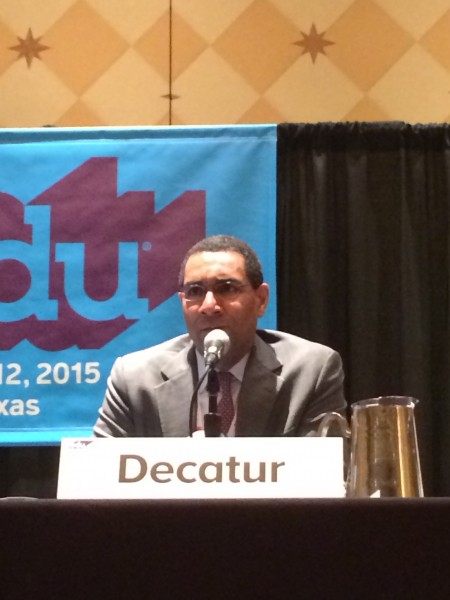The 'Unbundling' of Higher Education

A number of analysts and critics of higher education are anticipating the “unbundling” of higher education.
Just as the rise of the MP3 and streaming audio services resulted in the unbundling of albums as consumers downloaded, enjoyed and mashed up singles into their own playlists, some futurists are pointing to the rise of online resources and competency-based education as leading to the inevitable unbundling of colleges into individual courses and experiences that students will combine into self-tailored educational programs.
Kevin Carey, director of the New America Foundation, highlights this in his new book, The End of College: Creating the Future of Learning and the University of Everywhere. Carey’s book is not the first on this topic, and it certainly won’t be the last. (See Ryan Craig’s College Disrupted: The Great Unbundling of Higher Education, published just last week.) Carey’s book has attracted praise from Joe Nocera in the New York Times, who called the vision “at once apocalyptic and idealistic.” Michael Roth, president of Wesleyan University, and Janet Napolitano, president of the University of California, offered insightful reviews in The Atlantic and The Washington Post, respectively.
Last week, when I traveled to Austin, Texas, for SXSWedu, the discussion of the disruptive force of technology on education was ubiquitous. The overuse of the word “disruption,” in fact, generated a Twitter tempest among attendees. What are the implications of the disruption discussion for institutions such as Kenyon? How will core elements of our educational experience — elements that have proven to be timeless — continue to evolve in the face of technological advances?
One of the fundamental flaws I find with the unbundling hypothesis is the notion that Kenyon comes “pre-bundled” and that students simply select an educational program off the shelf. To the contrary, Kenyon students actively participate in the assembly of their own learning pathway. Our requirements do shape student course selections, and academic advisors help guide that process, but students build their own coherent four-year program.
Courses, moreover, are only part of the story. Students also choose their own meaningful experiences outside of the classroom (internships, study-away programs, research experience); they develop relationships with mentors; they integrate learning and leadership experiences from athletics, co-curricular activities and service work. The Kenyon education already is much closer to a personalized playlist than a structured concept album.
But a Kenyon education is much more than a collection of experiences, or a collection of bundled/delivered content. To paraphrase T.S. Eliot, sometimes it is possible to have the experience but miss the meaning. What distinguishes an education from a collection of experiences is the context in which they occur and the prompting to reflect upon, to extract and to absorb the meaning of those experiences. This, in turn, comes from the interactions and connections between teacher and student, between mentor and mentee, and among peers. As Martin Luther King, Jr. wrote in 1947 (in his college newspaper), “The complete education gives one not only power of concentration, but worthy objectives upon which to concentrate. The broad education will transmit … not only the accumulated knowledge … but also the accumulated experience of social living.”
But what is the role for technology in this educational experience? Technology is a proven tool for organizing, accessing and delivering content effectively, and I believe there is a place for new technological tools to support and enhance the work that we do at Kenyon. Our students have many choices among the experiences available to them, more opportunities than Kenyon ever has offered. The course catalog has grown extensively; more than 200 study-away programs are available; research experiences and internship opportunities continue to grow; and the Kenyon community has many alumni, coaches, faculty and staff who are eager to serve as mentors. Technology will make it possible for students and their advisors to navigate these opportunities and to integrate courses, internships, study-away, and co-curricular work into an educational program.
One of our challenges (and one of the priorities presented in the draft of the Kenyon 2020 strategic plan) is how to provide seamless, ready access to this information, allowing students to make informed choices about the construction of their own educational experience.
Imagine an online system in which students can simultaneously search the course catalog, biographies of alumni and faculty, study-away programs, and internship opportunities; a system in which faculty can develop a taxonomy of “tags” to make course connections across the curriculum or make particular course attributes more identifiable; a system in which information about student pathways and outcome experiences can be examined by students or faculty. This will boost our students’ capacity not only for exploration and self-discovery but also enhance their ability to integrate and connect.
These developments do not portend the demise of traditional institutions such as Kenyon, nor do they deny a place for the liberal arts college in the 21st century. They offer, instead, a means to empower our students to discover meaning in a range of experiences unimaginable a half-century ago.
